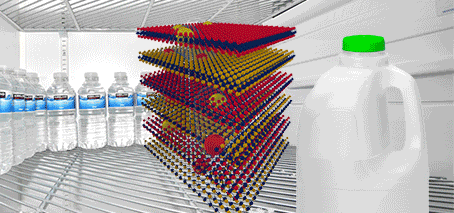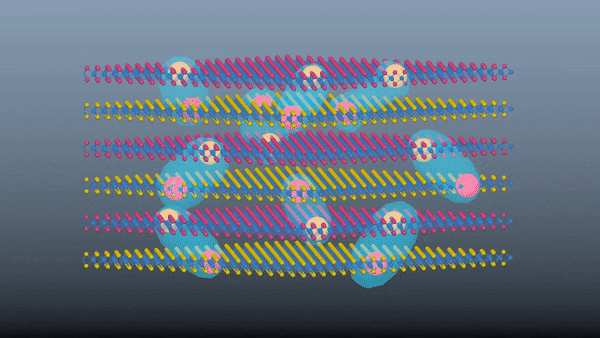Kitchen-temperature supercurrents from stacked 2-D materials

Could a stack of 2-D materials allow for supercurrents at ground-breaking warm temperatures, easily achievable in the household kitchen?
An international study published in August opens a new route to high-temperature supercurrents at temperatures as "warm" as inside a kitchen fridge.
The ultimate aim is to achieve superconductivity (i.e., electrical current without any energy loss to resistance) at a reasonable temperature.
Toward room-temperature superconductivity
Previously, superconductivity has only been possible at impractically low temperatures, less than -170°C below zero—even the Antarctic would be far too warm!
For this reason, the cooling costs of superconductors have been high, requiring expensive and energy-intensive cooling systems.
Superconductivity at everyday temperatures is the ultimate goal of researchers in the field.
This new semiconductor superlattice device could form the basis of a radically new class of ultra-low energy electronics with vastly lower energy consumption per computation than conventional, silicon-based (CMOS) electronics.
Such electronics, based on new types of conduction in which solid-state transistors switch between zero and one (ie, binary switching) without resistance at room temperature, is the aim of the FLEET Center of Excellence.
Exciton supercurrents in energy-efficient electronics
Because oppositely-charged electrons and holes in semiconductors are strongly attracted to each other electrically, they can form tightly-bound pairs. These composite particles are called excitons, and they open up new paths toward conduction without resistance at room temperature.
Excitons can in principle form a quantum, "superfluid" state, in which they move together without resistance. With such tightly bound excitons, the superfluidity should exist at high temperatures—even as high as room temperature.

But unfortunately, because the electron and hole are so close together, in practice excitons have extremely short lifetimes—just a few nanoseconds, not enough time to form a superfluid.
As a workaround, the electron and hole can be kept completely apart in two, separated atomically-thin conducting layers, creating so-called "spatially indirect" excitons. The electrons and holes move along separate but very close conducting layers. This makes the excitons long-lived, and indeed superfluidity has recently been observed in such systems.
Counterflow in the exciton superfluid, in which the oppositely charged electrons and holes move together in their separate layers, allows so-called "supercurrents" (dissipationless electrical currents) to flow with zero resistance and zero wasted energy. As such, it is clearly an exciting prospect for future, ultra-low-energy electronics.
Stacked layers overcome 2-D limitations
Sara Conti who is a co-author on the study, notes another problem however: atomically-thin conducting layers are two-dimensional, and in 2-D systems there are rigid topological quantum restrictions discovered by David Thouless and Michael Kosterlitz (2016 Nobel prize), that eliminate the superfluidity at very low temperatures, above about –170°C.
The key difference with the new proposed system of stacked atomically-thin layers of transition metal dichalcogenide (TMD) semiconducting materials, is that it is three dimensional.
The topological limitations of 2-D are overcome by using this 3-D superlattice of thin layers. Alternate layers are doped with excess electrons (n-doped) and excess holes (p-doped) and these form the 3-D excitons.
The study predicts exciton supercurrents will flow in this system at temperatures as warm as –3°C.
David Neilson, who has worked for many years on exciton superfluidity and 2-D systems, says "The proposed 3-D superlattice breaks out from the topological limitations of 2-D systems, allowing for supercurrents at –3°C. Because the electrons and holes are so strongly coupled, further design improvements should carry this right up to room temperature."
"Amazingly, it is becoming routine today to produce stacks of these atomically-thin layers, lining them up atomically, and holding them together with the weak van der Waals atomic attraction," explains Prof Neilson. "And while our new study is a theoretical proposal, it is carefully designed to be feasible with present technology."
The study
The study looked at superfluidity in a stack made of alternating layers of two different monolayer materials (n- and p-doped TMDC transition metal dichalcogenides WS2 and WSe2).
The paper, "Three-dimensional electron-hole superfluidity in a superlattice close to room temperature," was published as a Rapid Communication in Physical Review B in August 2020.
More information: M. Van der Donck et al. Three-dimensional electron-hole superfluidity in a superlattice close to room temperature, Physical Review B (2020). DOI: 10.1103/PhysRevB.102.060503
Journal information: Physical Review B
Provided by FLEET



















